All issues

Successor
Volume 15, Issue 8
Displaying 1-6 of 6 articles from this issue
- |<
- <
- 1
- >
- >|
-
[in Japanese], [in Japanese], [in Japanese]1980Volume 15Issue 8 Pages 587-592
Published: 1980
Released on J-STAGE: May 31, 2010
JOURNAL FREE ACCESSDownload PDF (2480K) -
[in Japanese], [in Japanese], [in Japanese]1980Volume 15Issue 8 Pages 593-598
Published: 1980
Released on J-STAGE: May 31, 2010
JOURNAL FREE ACCESSDownload PDF (6340K) -
Takeshi Hashimoto, Hitoshi Kaneko, Yugi Matoba1980Volume 15Issue 8 Pages 599-611
Published: 1980
Released on J-STAGE: May 31, 2010
JOURNAL FREE ACCESSThese simulation models of this first trial are very simple and their input datum of this GPSS digital simulation are only two indices due to a lot of maintenance reports and failure ones. It is postulated for the marine engine maintenance system that the engine system has no redundancy and the maintenance system member is homogeneous. Furthermore the following assumptions are accepted for the above simulation models; continuity or discontinuity of maintenance duty hour, that is, MODEL I (24 Hour Maintenance Model) and MODEL II (8 Hour Maintenance Model) which have the four maintenance levels. Some useful results and informations were obtained from the interesting and simple simulation programme. They are the availability of the engine system and the utilization of the maintenance system. Their daily maintenance datum are very varing but the average values during one year do not depend upon the difference between the two models and affected considerably by the member of the maintenance system and by the up-ratio of reliability of the engine system.View full abstractDownload PDF (1570K) -
Mamoru Furukawa, Toshimichi Fukuoka, Hiroshi Kitagawa1980Volume 15Issue 8 Pages 612-621
Published: 1980
Released on J-STAGE: May 31, 2010
JOURNAL FREE ACCESSThe purpose of this paper is to obtain some fundamental knowledges of the transient thermal stress problems in integrated flange for steam pipe line heated internally by fluids. In order to simplify the problems, it is assumed that temperature and stress distributions in the flange are axisymmetric, ignoring the effect of the joint bolts.
Solutions are obtained by means of the finite difference method. It is concluded that the dominant hoop stress occurs at the inner edge on the joint plane. To verify the theoretical solutions, photothermoelastic experiments are carried using the so-called sandwich technique. The experimental results correlate well with the numerical solutions.View full abstractDownload PDF (3015K) -
Takeshi Takao, Toru Nishihara, Masashi Nagai, Masao Yatsuo1980Volume 15Issue 8 Pages 622-630
Published: 1980
Released on J-STAGE: May 31, 2010
JOURNAL FREE ACCESSTwin bank engine, the ordinary type two slow speed diesel engines are combined with back to back each other and mounted on common bedplate, is the new type engine which has been developed to achieve low fuel oil consumption.
The special features of its structures are as follows.
(1) It has two main bearings on each vertical wall of the common bedplate.
(2) It has a longitudinal girder in the center of the engine, which separates the bedplate into two independent crank cases.
(3) Top bracings of friction type are provided at the upper section of frame boxes and connect the two banks at each corresponding pair of cylinders.
In order to clarify the behavior of the twin bank engine which has above special features and to confirm the structural superiority of the twin bank engine, stresses and deformations analyses of the common bedplate and the frame boxes by the F.E.M and by the plastic model test have been carried out.
Analysed results indicate the desirable rigidity of the common bedplate, and have a good agreement with the actual measured values at engine running.
So we conclude that estimation method of the stresses and deformations of the bedplate and the frame boxes of the twin bank engine is established here, and that the rigidity of bedplate of the twin bank engine is same as or higher than that of the ordinary type engine.View full abstractDownload PDF (4767K) -
Propeller and Shafting Committee of MESJ1980Volume 15Issue 8 Pages 631-636
Published: 1980
Released on J-STAGE: May 31, 2010
JOURNAL FREE ACCESSThis theme was selected from many ideas talked at the free discussion and taken by the questionnaire for the purpose of finding the possibility of new shafting system.
In this paper, possibility of realization and effectiveness were checked by trial design and alignment calculation. And also, problems derived from aft support of propeller and measures for utilizing the merit were investigated.
On the trial design, 230 type tanker was taken up as the sample and the shafting system was so designed that the current parts of shafting were used without any modifications as far as possible. And the realization was finally confirmed.
From the results of alignment calculation on the trial design, it was confirmed that the bending moment of propeller shaft at supporting position of stern tube aft bearing as well as the bearing load intensity were in low level.View full abstractDownload PDF (625K)
- |<
- <
- 1
- >
- >|